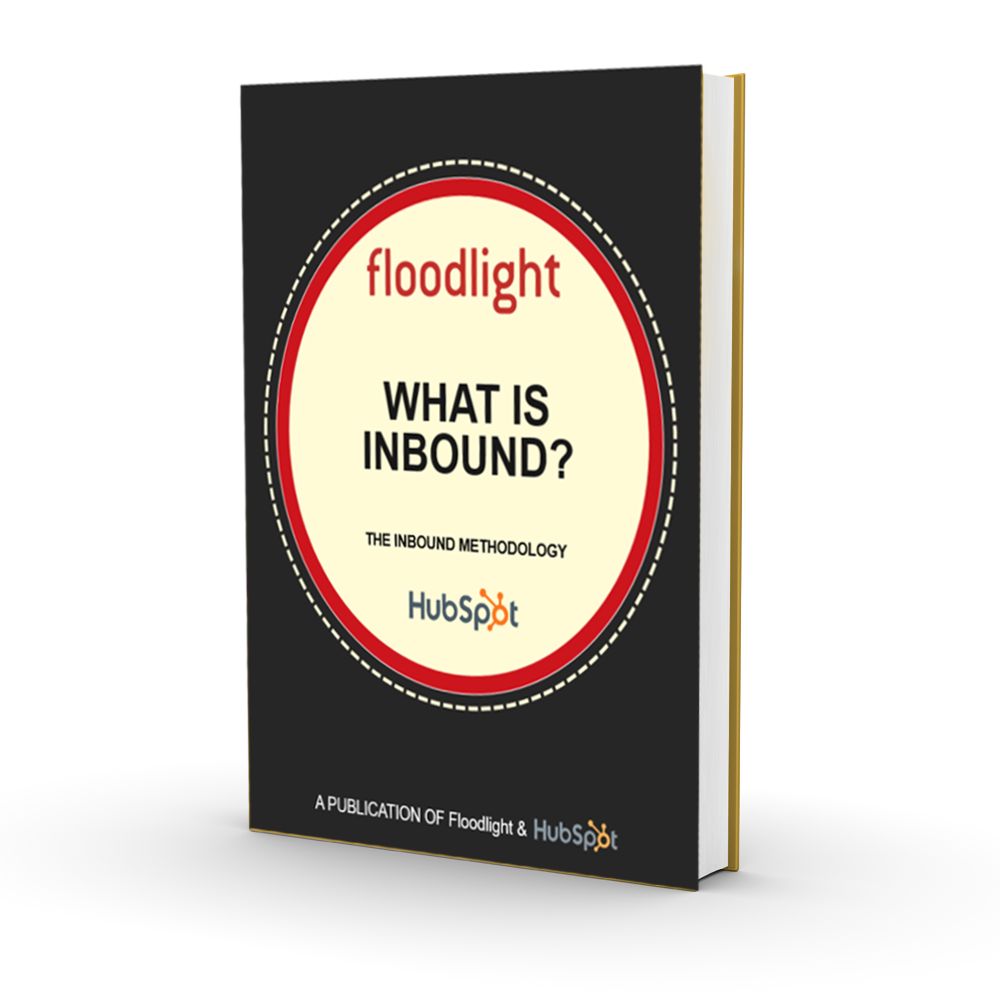Lead Scoring Best Practices: How to Build an Effective System in 2025
Key Takeaways

Mastering marketing lead scoring is critical for enhancing efficiency across your sales funnel by streamlining the identification and prioritisation of high-value leads. Here are the key takeaways to help you design and refine a robust, data-driven lead scoring framework:
- Segment Leads with Precision: A foundational lead scoring system classifies leads based on both demographic attributes (e.g., job title, industry, company size) and behavioural factors (e.g., website interactions, email engagement) for more targeted prioritisation.
- Balance Demographic and Behavioural Insights: Use demographic criteria to assess fit and behavioural scoring to gauge intent, ensuring a holistic understanding of lead quality. This prevents reliance on a single dimension and drives more accurate prioritisation.
- Customise Scoring Rules to Reflect Goals: Align scoring rules with your key business objectives by assigning points and weights tailored to your specific pipeline metrics, ensuring the system mirrors your operational priorities.
- Foster Sales-Marketing Synchronisation: A shared scoring approach promotes collaboration between sales and marketing, establishing clarity on when and why leads transition between teams, reducing friction and improving conversions.
- Leverage Automation for Scalability: Marketing automation tools streamline lead scoring by automating real-time updates, making the process adaptive to new data and enabling scale without sacrificing accuracy.
- Define Clear Handoff Thresholds for Conversions: Automate the transition of leads from marketing to sales with explicit scoring thresholds, ensuring high-quality prospects are promptly passed along for follow-up.
- Prioritise Continuous Optimisation: Regularly refine scoring models by analysing data from successful and unsuccessful conversions, enhancing precision and relevance over time.
- Streamline Sales with Actionable Insights: Minimise time wasted on unqualified leads by focusing sales efforts on high-value opportunities, increasing efficiency, closing rates, and ROI.
A thoughtfully executed lead scoring framework not only boosts sales productivity but also drives alignment across departments, ensuring seamless transitions and higher conversion rates.
What is Lead Scoring and Why Is It Essential for Business Growth?
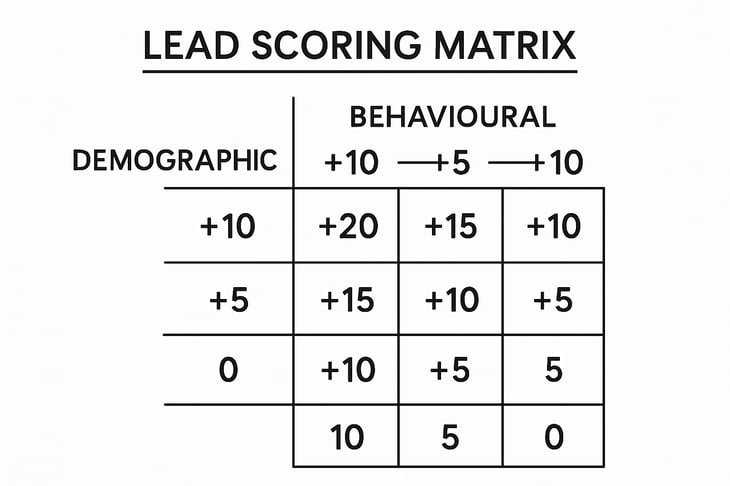
Mastering marketing lead scoring isn't just another box-ticking exercise; it's a powerful strategy to revolutionise your sales pipeline and substantially impact your bottom line. By implementing a data-centric approach, you'll move beyond guesswork, ensuring your sales team invests its attention where it matters most—on high-potential leads.
According to research by Gartner, organisations that implement effective lead scoring strategies see up to a 30% increase in sales opportunities and a 25% reduction in the sales cycle. These impressive figures underscore why lead scoring has become a crucial component of modern marketing strategies.
An effective lead scoring system synthesises demographic insights, behavioural data, and customised scoring models crafted to reflect your organisation's unique business priorities. When approached strategically, it bridges the gap between sales and marketing, fostering alignment that improves conversions and amplifies ROI.
If you're ready to optimise your pipeline, let's explore the essential methodologies, strategies, and tools for creating a lead scoring system that delivers measurable results.
Understanding the Fundamentals of Marketing Lead Scoring
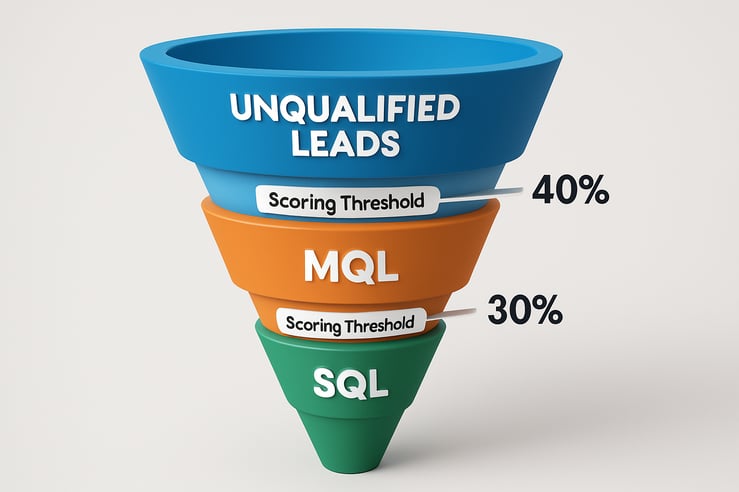
What Is Marketing Lead Scoring?
Marketing lead scoring is a systematic methodology for evaluating and ranking leads based on their likelihood to convert into customers. This ranking—typically represented as numerical scores—is determined using pre-established criteria such as demographic characteristics, behavioural activities, and levels of engagement. A robust lead scoring system allows businesses to efficiently allocate resources, prioritise sales efforts, and align cross-functional teams.
Essential benefits of lead scoring include:
- Improving Sales Focus: Ensures sales teams concentrate on the most promising leads, reducing wasted time and effort.
- Boosting Conversion Rates: Enables marketing to design campaigns that nurture and convert warm leads more effectively.
- Enhancing Collaboration: Establishes a shared understanding of lead quality, fostering more substantial alignment between sales and marketing teams.
- Increasing Revenue: Companies with mature lead scoring systems report up to 18% more revenue than those without, according to a study by Aberdeen Group.
Why Lead Quality Is Paramount in Marketing
Lead quality is a cornerstone of an effective marketing strategy, especially in competitive markets where teams often face a high volume of inquiries. Focusing on unqualified or low-value leads not only depletes resources but also disrupts the synergy between sales and marketing. A data-driven lead scoring model addresses these challenges by filtering out less engaged prospects, ensuring resources are directed toward leads with the potential for a higher return on investment.
"The difference between good and great marketing teams often comes down to their ability to identify and prioritise high-quality leads. An effective lead scoring system is the foundation of this capability." - David Ryan, CMO at Salesforce.
Real-World Illustration: SaaS Industry Success
Consider SaaS companies, which often evaluate lead quality based on actions such as free trial activations or webinar attendance. Coupled with demographic features such as job roles or company size, this comprehensive approach to lead scoring enabled a prominent SaaS firm to reduce the time spent on unqualified leads by 35%, while achieving a 25% increase in sales-qualified leads (SQLs).
Example: Marketo implemented a revised lead scoring system that reduced their sales cycle by 21 days and increased their conversion rate from MQL to opportunity by 13%, demonstrating the tangible impact of practical lead qualification.
Building an Effective Lead Scoring Model: Step-by-Step Guide
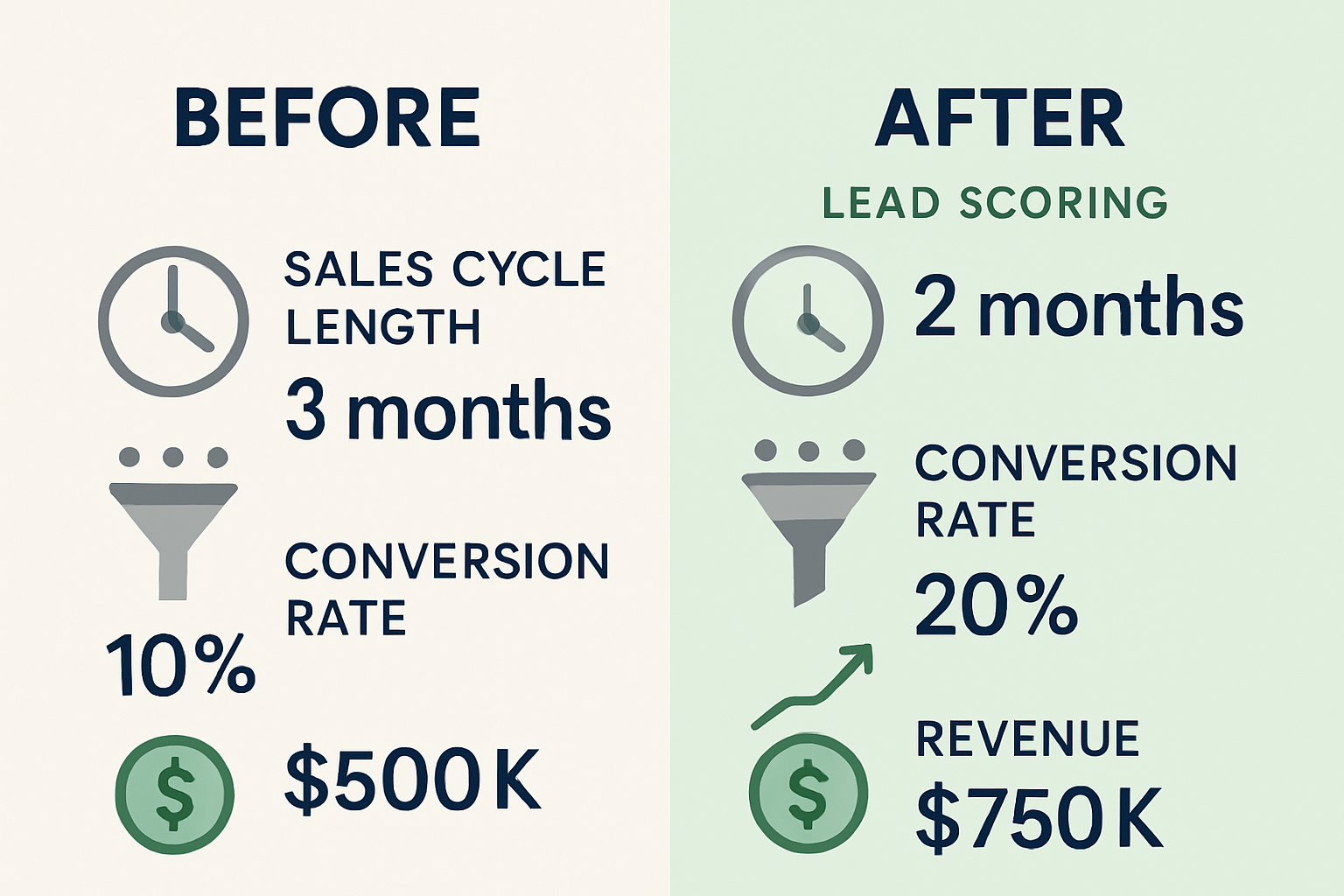
Step 1: Define Lead Qualification Criteria
The cornerstone of any successful lead scoring system is establishing clear qualification criteria that align with your ideal customer profile (ICP). These criteria typically fall into two categories:
Demographic Metrics:
- Professional role or seniority (e.g., C-suite prospects score higher than coordinators).
- Industry relevance (e.g., healthcare leads might earn higher scores for a MedTech business).
- Company scale (e.g., target enterprises with 1,000+ employees for B2B solutions).
- Annual revenue (e.g., companies with £10M+ revenue may receive higher scores for enterprise solutions).
- Geographic location (e.g., prioritising regions where you have strong service capabilities).
Behavioural Indicators:
- Engagement with premium content (e.g., whitepaper downloads or webinar participation).
- Visiting high-intent pages (e.g., pricing or product demo pages).
- Email actions (e.g., high open and click-through rates).
- Form submissions (e.g., contact requests or newsletter sign-ups).
- Recency and frequency of interactions (e.g., multiple site visits within a short timeframe).
By combining these insights, businesses can build more accurate and predictive lead profiles. Research by Forrester indicates that companies using both demographic and behavioural scoring see a 17% higher lead-to-opportunity conversion rate compared to those using only one approach.
Step 2: Assign Rules and Weight Scoring Metrics
To reflect the significance of specific actions or traits, adjust the point values in your scoring model accordingly. Key elements include:
- Weighted Scoring: Allocate higher scores for actions that demonstrate strong intent, such as demo bookings (+20), compared to less significant engagements, like blog post views (+5).
- Negative Scoring: Deduct points for behaviours that indicate disinterest or lack of potential, like unsubscribing from newsletters (-10) or prolonged inactivity (-15 after 90 days).
- Sales Thresholds: Establish scoring thresholds to identify when a lead becomes sales-qualified. For instance, leads with a score of 75 or higher may require immediate follow-up.
Sample Scoring Framework:
| Demographic Criteria | Points | Behavioural Activity | Points |
|---|---|---|---|
| C-level Executive | +15 | Demo Request | +30 |
| Director Level | +10 | Pricing Page Visit | +15 |
| Manager Level | +5 | Webinar Attendance | +20 |
| Target Industry | +10 | Case Study Download | +15 |
| Company Size 500+ | +15 | Email Open | +2 |
| Non-target Region | -10 | Email Click | +5 |
| Competitor | -20 | Unsubscribe | -15 |
Step 3: Automate the Scoring Process
Simplify implementation with marketing automation platforms like HubSpot, Pardot, or Marketo. These platforms enable you to:
- Set scoring rules and adjust criteria as data changes.
- Automate real-time updates to scores based on lead activity.
- Monitor engagement behaviour trends to continually refine processes.
- Trigger automated workflows when leads reach specific score thresholds.
According to a report by Demand Gen, 68% of successful B2B marketers cite lead scoring as most responsible for improving revenue contribution, highlighting the importance of automating this process effectively.
Advanced Lead Scoring Techniques for 2025
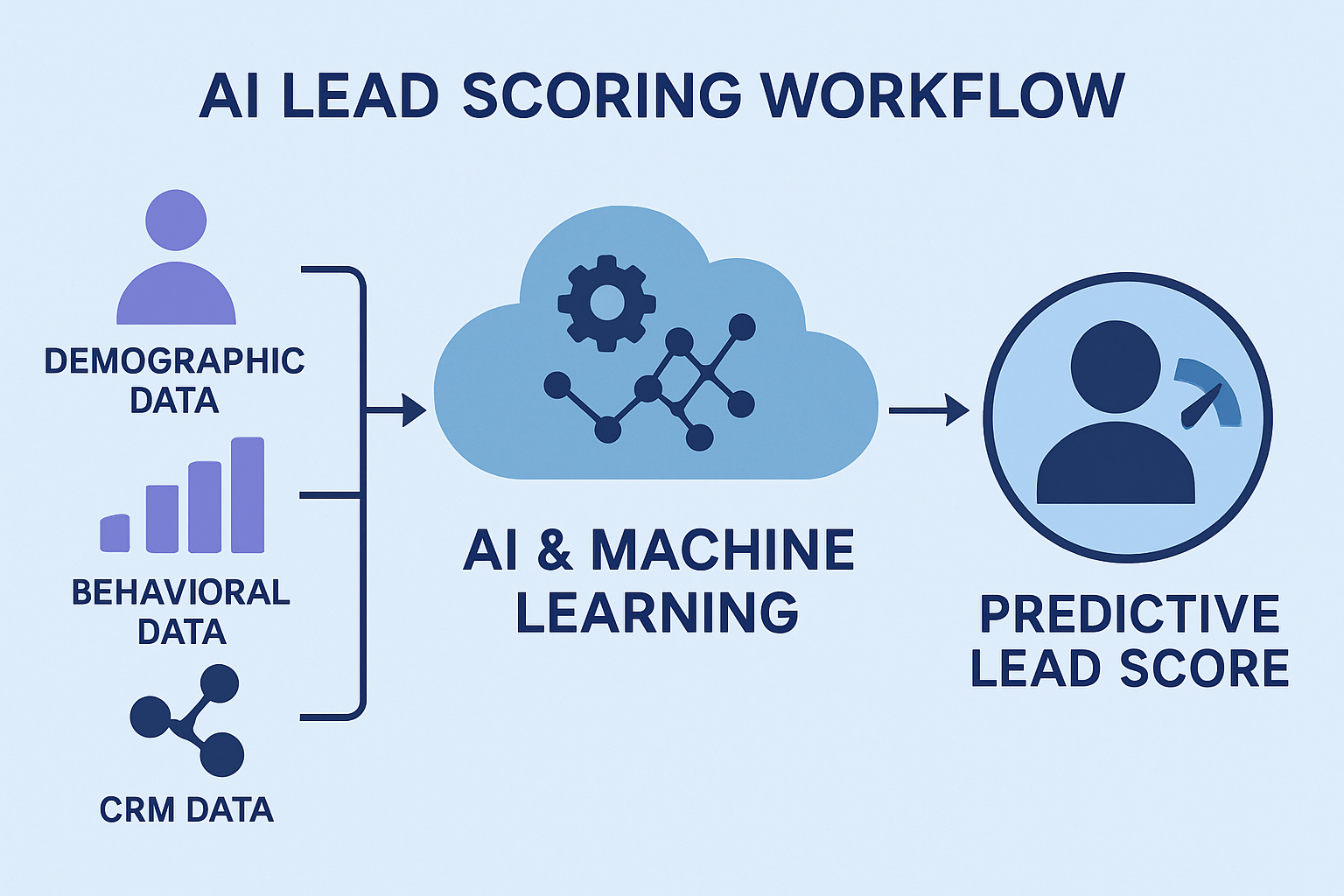
Implementing Multi-Touch Attribution Models
Modern lead scoring systems are increasingly incorporating multi-touch attribution to gain a comprehensive understanding of the whole customer journey. This approach recognises that conversion rarely happens after a single interaction and assigns appropriate value to each touchpoint.
Implementation Tips:
- Assign different weights to first-touch, influencing, and last-touch interactions.
- Consider time decay models where recent interactions receive higher scores
- Use machine learning algorithms to identify the most influential touchpoints in your conversion path
Intent Data Integration
Incorporating third-party intent data into your lead scoring model can dramatically improve accuracy by capturing prospect research activities outside your owned channels.
Key Benefits:
- Identify prospects actively researching solutions like yours
- Detect interest from companies before they even visit your website
- Prioritise leads showing purchase intent signals across the web
Leveraging Firmographic Enrichment
Automatically enriching lead data with firmographic information from sources like Clearbit, ZoomInfo, or LinkedIn Sales Navigator can enhance your demographic scoring without requiring leads to complete lengthy forms.
Example Implementation: A UK-based financial services company implemented firmographic enrichment, resulting in a 40% increase in lead qualification accuracy. This enabled them to focus on prospects with genuine buying potential.
Optimising and Scaling Lead Scoring Models
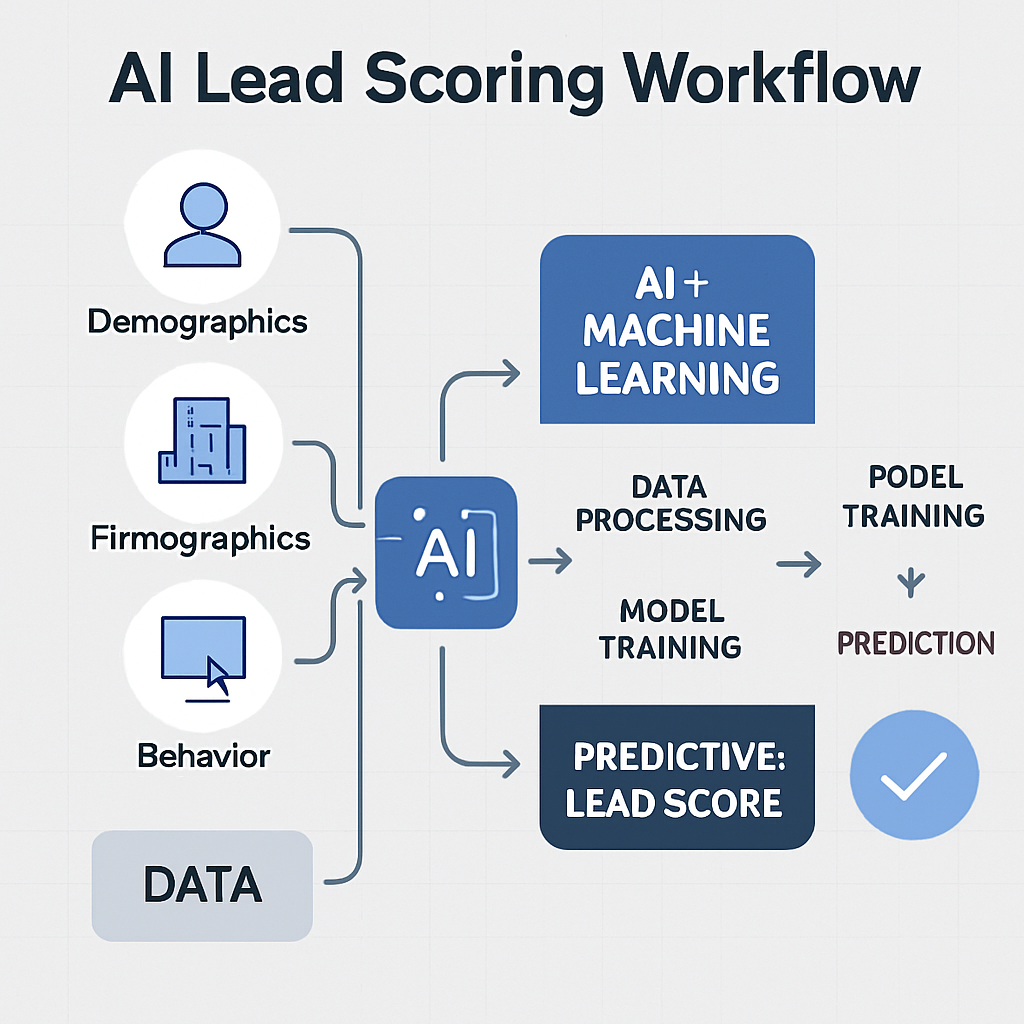
Analytics-Driven Refinements
To remain effective, lead scoring systems require consistent evaluation and optimisation. Monitor conversion metrics and adapt scoring rules as market conditions, campaign performance, or customer behaviours evolve.
Proven Optimisation Strategies:
- A/B Test Scoring Variables: Experiment with different weights for high-value actions to maximise conversion outcomes.
- Use Real-Time Dashboards: Trace key metrics, such as MQL-to-SQL conversion rates, to identify optimisation opportunities.
- Seasonal Adjustments: Adjust scoring rules based on cyclical patterns like peak purchasing periods or budgeting timelines.
- Closed-Loop Analysis: Regularly compare lead scores to actual conversion outcomes to identify scoring gaps.
Case in Focus: Analytics Enhancing Outcomes
A global enterprise software provider refined its lead scoring system by analysing sales data, resulting in more substantial alignment between lead behaviours and conversion triggers. This adjustment ultimately improved SQL conversions by 30% and drove £2.3 million in incremental annual revenue.
Their approach included:
- Monthly review meetings between sales and marketing
- Quarterly scoring model adjustments based on conversion data
- Implementation of lead scoring decay for inactive contacts
AI and Predictive Analytics in Lead Scoring
As businesses grow, manually adjusting lead scoring systems becomes impractical. AI and predictive analytics offer scalable solutions by identifying patterns and anticipating lead behaviours based on intricate datasets.
Advanced Features:
- AI-driven lead prioritisation ensures scores dynamically adapt as new data emerges.
- Predictive modelling simulates different scenarios to fine-tune nurturing strategies.
- Machine learning algorithms that continuously improve scoring accuracy based on conversion outcomes.
Real-World Application: HubSpot's predictive lead scoring uses AI to analyse thousands of data points from your CRM, identifying patterns in converted leads that humans might miss. Companies using this approach report up to 40% improvement in lead qualification accuracy.
Uniting Sales and Marketing for Greater Effectiveness
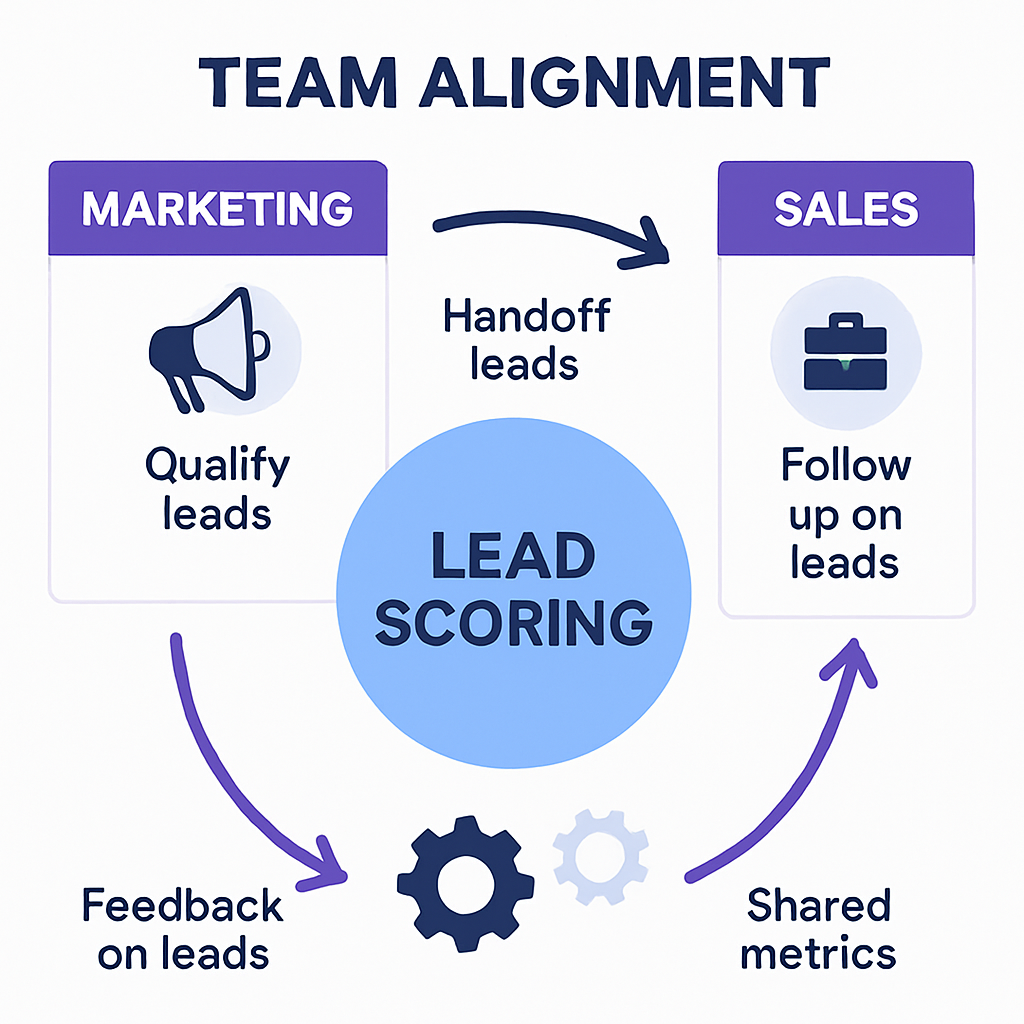
Collaboration between sales and marketing teams is critical for maximising the success of lead scoring systems. Misaligned goals or siloed approaches often create inefficiencies.
Collaborative Approaches:
- Unified Definitions: Create clear, shared criteria for MQLs and SQLs.
- Regular Pipeline Reviews: Schedule joint evaluations to enhance lead quality feedback.
- Centralised Scoring Visibility: Utilise integrated CRMs to deliver real-time scoring data that is accessible to both teams.
- Feedback Loops: Establish formal processes for sales to provide input on lead quality.
"The most successful lead scoring implementations we've seen involve equal input from both sales and marketing teams from day one. When both departments have ownership of the scoring criteria, handoff friction virtually disappears." - Sarah Thompson, Head of Revenue Operations, Drift.
Common Lead Scoring Mistakes to Avoid

To maximise the effectiveness of your lead scoring system, be aware of these frequent pitfalls:
- Over-Complexity: Creating scoring models with too many variables can make the system difficult to maintain and understand.
- Static Models: Failing to regularly update scoring criteria as market conditions and buyer behaviours evolve.
- Ignoring Sales Feedback: Developing scoring models without input from sales teams who interact directly with prospects.
- Neglecting Negative Indicators: Only focusing on positive signals while ignoring red flags that indicate poor fit or disinterest.
- One-Size-Fits-All Approach: Using identical scoring models across different product lines, regions, or customer segments.
Lead Scoring Implementation Checklist
![]()
Use this checklist to ensure your lead scoring implementation covers all essential elements:
- Defined your ideal customer profile (ICP) with input from sales, marketing, and customer success
- Established clear scoring criteria for both demographic and behavioural factors
- Set appropriate point values and thresholds for MQLs and SQLs
- Configured your marketing automation platform to track and score relevant activities
- Created processes for regular review and refinement of scoring models
- Established clear handoff procedures between marketing and sales teams
- Developed reporting dashboards to monitor lead scoring effectiveness
- Trained all relevant team members on the scoring system and its business impact
Conclusion: The Future of Lead Scoring
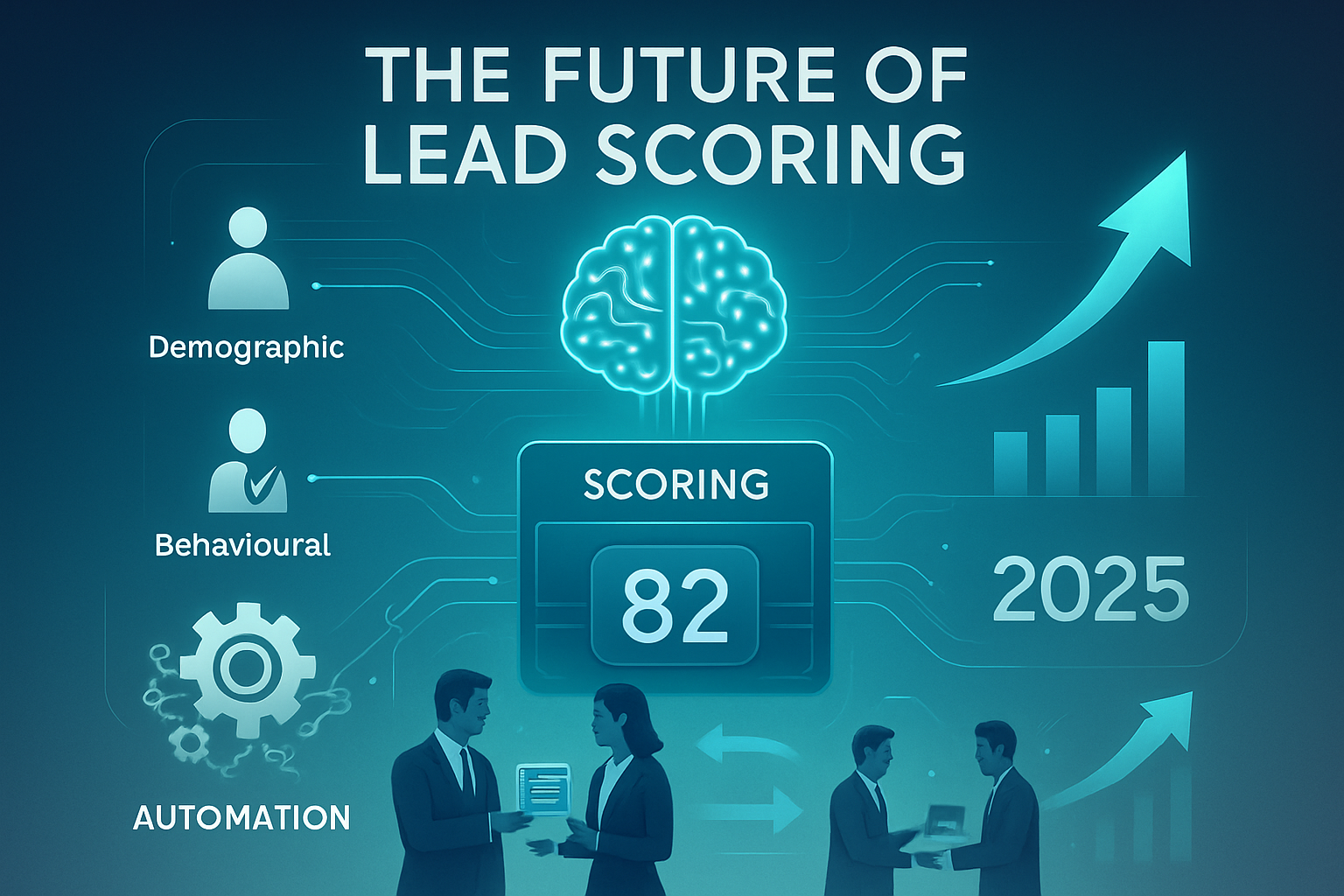
Marketing lead scoring is more than a supporting strategy; it's a transformative approach to optimising resource allocation, streamlining cross-functional workflows, and delivering consistently higher conversion rates. The integration of demographic and behavioural data, along with tools like marketing automation and AI-driven models, creates an adaptive, forward-looking lead scoring system.
By continuously refining scoring parameters, incorporating advanced metrics such as survey-derived insights, and fostering alignment between teams, businesses can drive both immediate results and long-term growth. The question isn't whether to adopt lead scoring, but how it can be dynamically and effectively leveraged to gain a competitive edge in today's data-driven marketplace.
As we move deeper into 2025, the most successful organisations will be those that embrace AI-enhanced lead scoring systems that adapt in real-time to changing market conditions and buyer behaviours. Now is the time to invest in more innovative, scalable systems for sustainable success.
FAQ: Marketing Lead Scoring

How long does it take to implement an effective lead scoring system?
Implementing a basic lead scoring system typically takes 2-4 weeks, including the time needed to define criteria, set up tracking in your marketing automation system, and establish initial thresholds. However, reaching a mature, highly accurate system often takes 3-6 months of data collection and refinement.
What is the difference between explicit and implicit scoring?
Explicit scoring is based on information that prospects voluntarily provide (such as job title or company size on a form). In contrast, implicit scoring is derived from observed behaviours (such as website visits or email engagement). Effective lead scoring systems typically use both approaches.
How often should we review and update our lead scoring model?
Best practice is to conduct minor reviews monthly and perform a comprehensive evaluation quarterly. Additionally, significant changes in product offerings, target markets, or business strategy should trigger an immediate review of your scoring criteria.
Can lead scoring work for B2C businesses?
Absolutely. While B2C scoring may place less emphasis on company-related criteria, it can effectively use behavioural data, purchase history, and personal demographics to identify high-value consumer prospects and personalise the customer journey.
How do we measure the ROI of our lead scoring implementation?
Key metrics to track include a reduction in sales cycle length, an increase in lead-to-opportunity conversion rate, an improvement in opportunity-to-close ratio, and growth in average deal size. Compare these metrics before and after implementing lead scoring to calculate your ROI.
